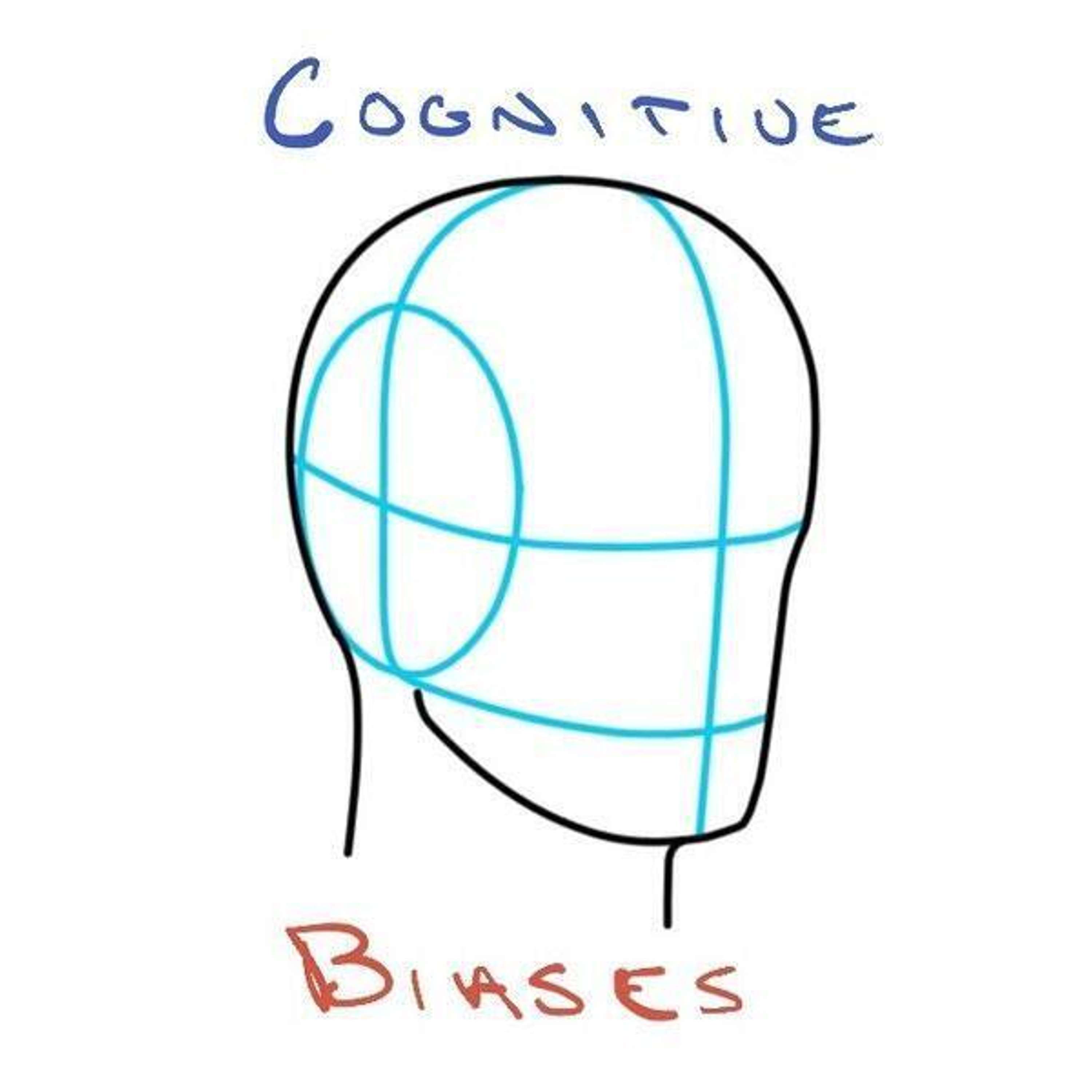
Welcome to the 840 new members of the curiosity tribe who have joined us since Friday. Join the 26,411 others who are receiving high-signal, curiosity-inducing content every single week! Oh, and share this on Twitter to help grow the tribe!
Today’s newsletter is brought to you by MicroAcquire!
MicroAcquire is revolutionizing the startup acquisition process. As the #1 startup acquisition marketplace in the world, MicroAcquire provides a platform covering everything you need in order to buy and sell startups. The company recently raised a $6.3 million seed round from a long list of technology entrepreneurs and investors (including this humble newsletter writer!) and is poised for rapid growth.
If you are interested in buying or selling a startup, check out MicroAcquire today!
Today at a Glance
Cognitive biases are systemic errors in thinking that negatively impact decision-making quality and outcomes.
Combatting cognitive biases relies first and foremost on establishing a level of awareness of the biases.
Overview, examples, and combat tactics for common biases, including Dunning-Kruger Effect, Fundamental Attribution Error, Bandwagon Effect, Egocentric Bias, Naïve Realism, Baader-Meinhof Phenomenon, Pygmalion Effect, Confirmation Bias, Backfire Effect, and Anchoring.
The Cognitive Bias Handbook - Part I
Cognitive biases are systemic errors in thinking that negatively impact decision-making quality and outcomes. I recently shared a Twitter thread covering the basics of 20 cognitive biases - but it was admittedly surface-level (280 characters only allows for so much depth and nuance on a topic!).
So here we are. It’s time to dive deeper on cognitive biases, including examples and specific ways to combat each one. To avoid a monstrous newsletter piece that no one has the time to read (or listen to), I will be splitting the coverage of the 20 cognitive biases across 2 newsletters over the coming weeks (with each covering 10 common biases).
This two-part newsletter series will be split as follows:
Part I: Fundamental Attribution Error, Bandwagon Effect, Egocentric Bias, Naïve Realism, Baader-Meinhof Phenomenon, Pygmalion Effect, Confirmation Bias, Backfire Effect, Anchoring, and Dunning-Kruger Effect.
Part II: Ben Franklin Effect, Loss Aversion, Endowment Effect, Availability Bias, Survivorship Bias, Ikea Effect, Hindsight Bias, Plan Continuation Bias, Gambler’s Fallacy, and Curse of Knowledge.
This handbook is designed to be a resource you can save and come back to whenever you need a refresher. Without further ado, let’s dive into Part I…
Dunning-Kruger Effect
What is it?
The Dunning-Kruger Effect says that people with a low objective ability at a task are prone to overestimate their ability at that task.
Humans are notoriously incapable of objective evaluation of themselves, including of their competency levels.
(Note: see below for a deep-dive thread I wrote on Dunning-Kruger!)
Examples
“Everyone is a genius in a bull market.”
This is a common phrase heard in the investment world during bull markets. When everyone is making money, everyone starts to fancy themselves expert investors. They fail to separate their objective skill at the task from the outcomes.
If you start hearing more and more people bragging about their stock market prowess, the market is entering the danger zone.
How do you combat it?
Several tactical strategies for combatting the Dunning-Kruger Effect:
Identify your circle of competence: Know what you know, and what you don’t.
Get comfortable with “I don’t know”: Most people are afraid of this phrase. Get comfortable with it.
Challenge yourself: Consistently challenge your belief on your own competency ratings. Do you actually know something as well as you think you do? What would an unbiased third-party say?
It will feel uncomfortable - you’ll be challenging your most basic instincts. If you persist, you’ll be less prone to falling victim to the Dunning-Kruger Effect.
Fundamental Attribution Error
What is it?
Fundamental Attribution Error (or “FAE” for short) is the human tendency to hold others accountable (while giving ourselves a break).
It says that humans will tend to:
Attribute the actions of others to their character (and not to their situation or context).
Attribute our own actions to situation and context (and not to our character).
Why do we do this? Well, as with many of the biases we will cover, it likely developed as a heuristic (a problem-solving or decision-making shortcut), in this case for simplifying the process and judgement around new human relationships.
From an evolutionary perspective, quickly attributing negative actions to character (rather than situation or context) may have kept you alive, as you’d be more likely to avoid that individual.
But in a modern context, being prone to FAE can create real problems.
Examples
The workplace is a common FAE breeding ground.
It is easy to form perspectives on the character of colleagues and bosses based on small pieces of information. If a colleague arrives late for work, they are lazy, right? This is clearly a flawed line of thinking, as there are numerous factors that could have contributed to your colleague’s lateness.
The reality is that, in these instances, you are using limited information to create an overall picture of an individual. This is the equivalent of seeing one square of a map and believing you know the map in its entirety.
How do you combat it?
The first step to combatting FAE (and all cognitive biases, for that matter!) is awareness. Keep it in mind as you build a body of experiences with new colleagues or acquaintances.
Beyond awareness, combatting FAE comes down to forcing yourself to slow down and evaluate the potential circumstances or situational factors that may be influencing an individual’s actions or behaviors. You won’t always have the time to do so (heuristics can be helpful!), but with more lasting relationships (friends, partners, colleagues, etc.), it is worth the extra effort.
You’ll build deeper, more trusting relationships (and naturally become a more compassionate person).
Bandwagon Effect
What is it?
Humans evolved as a social species. Our communities and collective behavior allowed us to thrive.
But our nature has a downside…
It creates a strong tendency to speak, act, or believe things simply because a lot of other people do. The Bandwagon Effect says that we prefer actions that many others are taking, irrespective of the logic or soundness of those actions.
Our social nature subconsciously pushes us towards fitting in, leading to mindless actions and dangerous groupthink.
Examples
The classic example of Bandwagon Effect is from a popular old TV show, Candid Camera, in which unknowing participants were caught on hidden cameras doing funny things.
In one episode, people entered an elevator to find several people (actors) standing facing the back wall. Rather than question the behavior, many of the elevator entrants simply mimicked the behavior, despite its absurdity.
The Bandwagon Effect is all around us - in investing (FOMO and meme stocks, anyone?!), politics (sigh…), business (companies blindly following the strategies of competitors), and more.
Once you learn it, you’ll start seeing it all around you.
How do you combat it?
There are two effective ways to combat the Bandwagon Effect:
Ground yo...
More Episodes
 2024-04-05
2024-04-05
 2024-04-03
2024-04-03
 2024-03-29
2024-03-29
 2024-03-27
2024-03-27
 2024-03-22
2024-03-22
 2024-03-15
2024-03-15
 2024-03-13
2024-03-13
 2024-03-07
2024-03-07
 2024-03-05
2024-03-05
 2024-02-29
2024-02-29
 2024-02-27
2024-02-27
 2024-02-20
2024-02-20
 2024-02-13
2024-02-13
 2024-02-06
2024-02-06
Create your
podcast in
minutes
- Full-featured podcast site
- Unlimited storage and bandwidth
- Comprehensive podcast stats
- Distribute to Apple Podcasts, Spotify, and more
- Make money with your podcast
It is Free
- Privacy Policy
- Cookie Policy
- Terms of Use
- Consent Preferences
- Copyright © 2015-2024 Podbean.com






